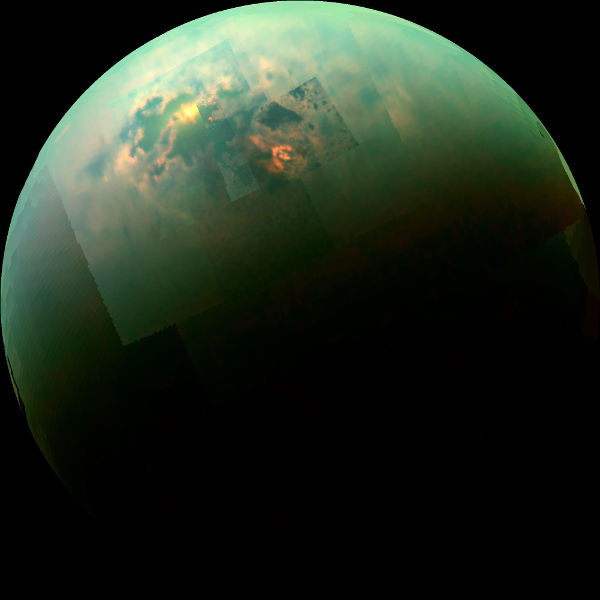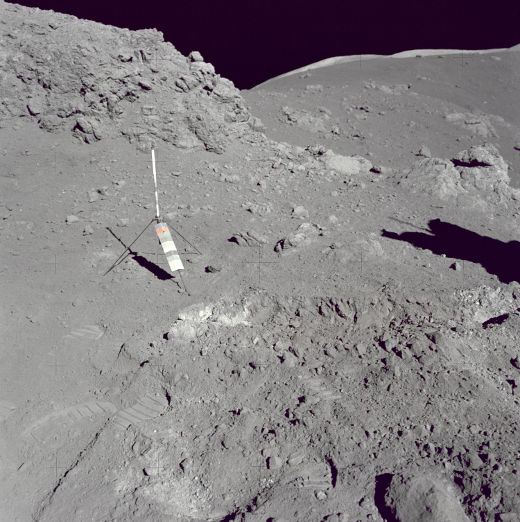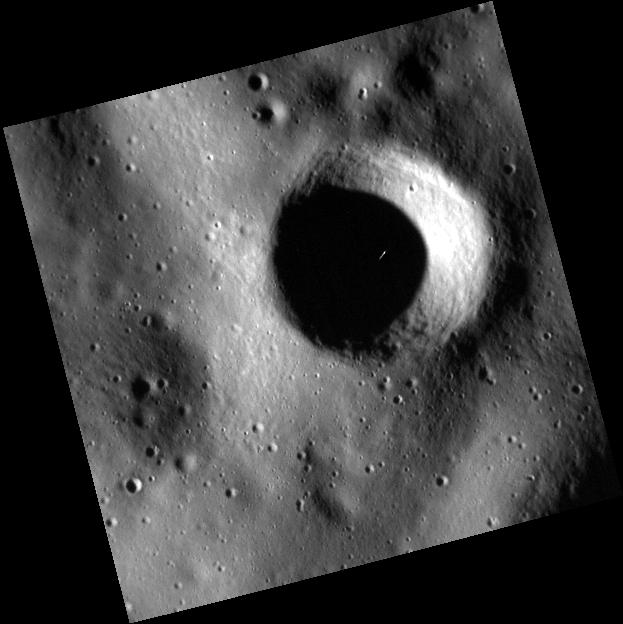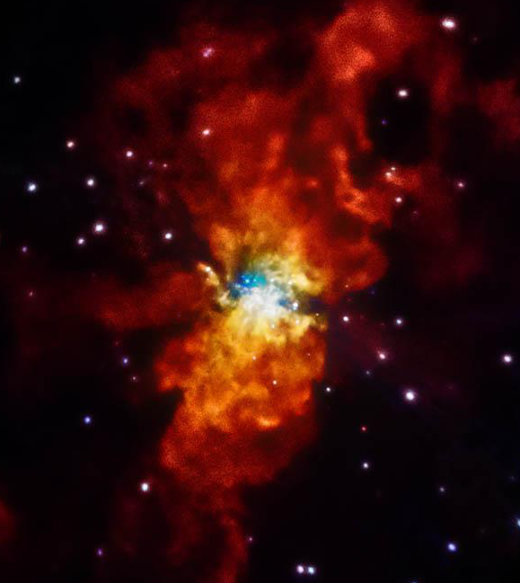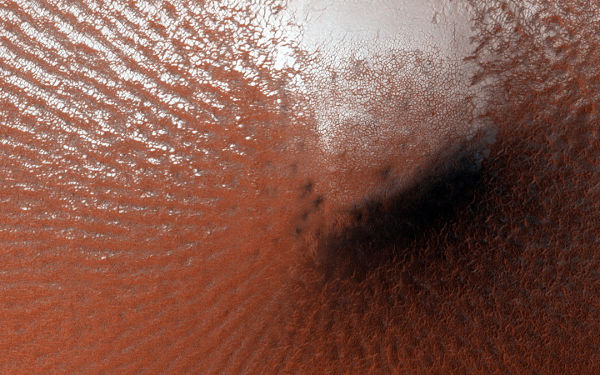
In what is believed to be a first, the high resolution camera on-board the Mars Orbiter may have discovered frost on a non-polar region of the planet. While photographing a crater in the Northern Plains, it may have discovered a thin layer of bright frost on part of the crater’s wall. Since carbon dioxide is not stable under (Martian) summer conditions, this is likely a patch of water ice.
